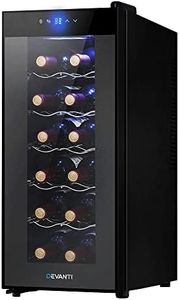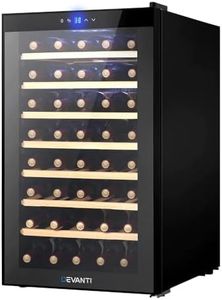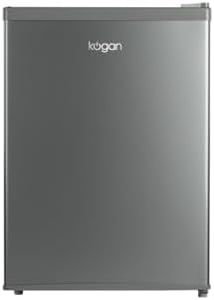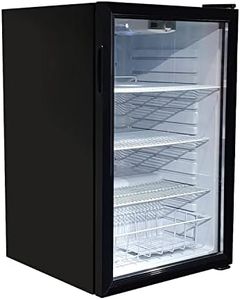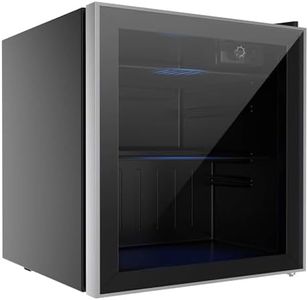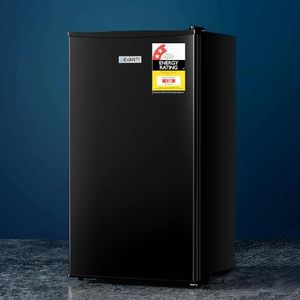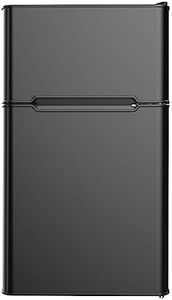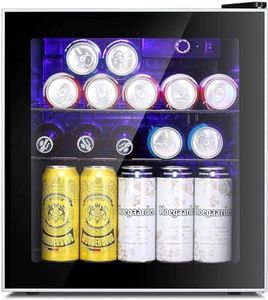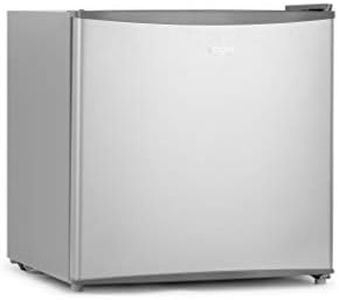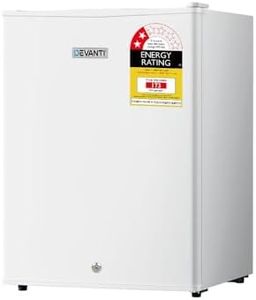We Use CookiesWe use cookies to enhance the security, performance,
functionality and for analytical and promotional activities. By continuing to browse this site you
are agreeing to our privacy policy
10 Best Bar Fridges
From leading brands and best sellers available on the web.Buying Guide for the Best Bar Fridges
Picking the right bar fridge is all about understanding your storage needs, the size of your space, and what you plan to keep inside. Bar fridges are compact refrigerators designed for convenience; they’re great for drinks, small snacks, or supplemental cold storage in tight spaces. To make an informed choice, it’s helpful to weigh different specifications that influence how the fridge will fit and function in your lifestyle.Capacity (Litres)Capacity refers to how much the fridge can hold, usually measured in litres. This is important because it determines how many drinks, bottles, snacks, or other items you can store. Small bar fridges typically range from about 40 to 80 litres; these are suitable for individual use or small offices. Medium sizes fall between 90 and 120 litres and can handle a bit more, like for families or gatherings. Large bar fridges go above 120 litres and may have dedicated compartments or features for bottles and cans. To pick the best capacity, think about your regular usage — if you frequently entertain or want extra storage for groceries, larger is better, but for solo or occasional use, a compact model will save space and energy.
Dimensions and PlacementDimensions measure the fridge’s width, depth, and height. This is crucial because you need the fridge to physically fit where you plan to place it — under a counter, in a corner, or beneath a desk. Fridges come in very compact sizes for tiny spaces and slightly larger profiles for more substantial storage. Always measure your intended spot and allow some extra room for ventilation. If floor area is limited, prioritize height over depth or width, but if you want easy access for kids or frequent reach-ins, a shorter, wider model may work better. Make sure the door swing direction matches your space layout.
Shelving and Storage OptionsShelving configuration refers to how the inside is organized. This matters because adjustable shelves, can dispensers, and door bins let you customize storage for tall bottles or lots of cans. Some fridges have fixed shelves, while others allow you to rearrange or remove shelves as needed. If you want to store wine upright, look for taller storage spots. If you mainly keep cans or small snacks, more shelves and door bins maximize efficiency. Think about the items you usually refrigerate, and select a model with interior flexibility to suit your habits.
Temperature ControlTemperature control lets you adjust how cold the inside gets. Some fridges have a simple dial with a few settings, while others offer finer control and separate compartments. More precise controls can keep beverages at the perfect chill, or even store delicate items like cheese at just the right temp. If your needs are basic—mostly sodas and beer—simple settings may suffice. For preserving food, specific drinks, or varying items, look for a bar fridge with adjustable or digital temperature settings.
Energy EfficiencyEnergy efficiency describes how much electricity the fridge uses, which can impact your power bills and environmental footprint. Most fridges have an energy rating label that quickly tells you their efficiency; more stars or a higher grade means less energy use over time. More efficient fridges are ideal for daily or continuous use, while less efficient models may work if you only cool items occasionally. If the fridge will run all year, prioritizing energy efficiency makes sense.
Freezer CompartmentSome bar fridges include a small freezer section. This is great for storing ice cubes, frozen snacks, or a few ice cream treats. Freezer compartments vary from tiny trays just big enough for an ice tray, up to larger spaces that can fit several small items. If you enjoy chilled drinks needing ice or want to keep some frozen food on hand, prioritize a fridge with a usable freezer section. Skip this feature if you don't need frozen storage, and gain a bit more room for cold drinks instead.
Noise LevelNoise level refers to how loud the fridge is while running. Bar fridges are often used in bedrooms, living rooms, or offices, so a quiet model can make a big difference. Some fridges are almost silent, ideal for sleeping spaces or quiet work areas, while others may hum more noticeably. If noise sensitivity is an issue, check the decibel levels or look for fridges that are marketed as quiet or silent operation to fit comfortably into your environment.



